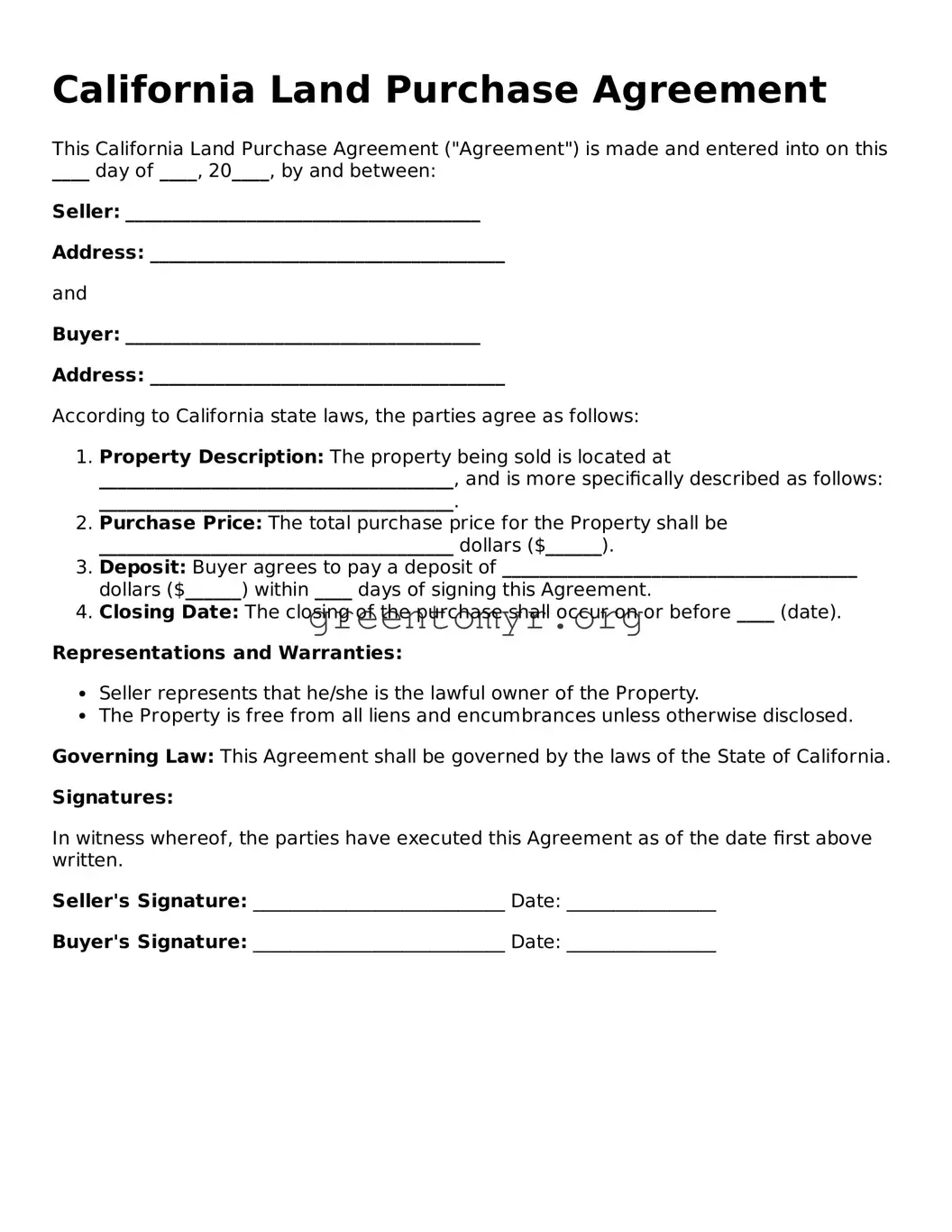California Land Purchase Agreement
This California Land Purchase Agreement ("Agreement") is made and entered into on this ____ day of ____, 20____, by and between:
Seller: ______________________________________
Address: ______________________________________
and
Buyer: ______________________________________
Address: ______________________________________
According to California state laws, the parties agree as follows:
- Property Description: The property being sold is located at ______________________________________, and is more specifically described as follows: ______________________________________.
- Purchase Price: The total purchase price for the Property shall be ______________________________________ dollars ($______).
- Deposit: Buyer agrees to pay a deposit of ______________________________________ dollars ($______) within ____ days of signing this Agreement.
- Closing Date: The closing of the purchase shall occur on or before ____ (date).
Representations and Warranties:
- Seller represents that he/she is the lawful owner of the Property.
- The Property is free from all liens and encumbrances unless otherwise disclosed.
Governing Law: This Agreement shall be governed by the laws of the State of California.
Signatures:
In witness whereof, the parties have executed this Agreement as of the date first above written.
Seller's Signature: ___________________________ Date: ________________
Buyer's Signature: ___________________________ Date: ________________
